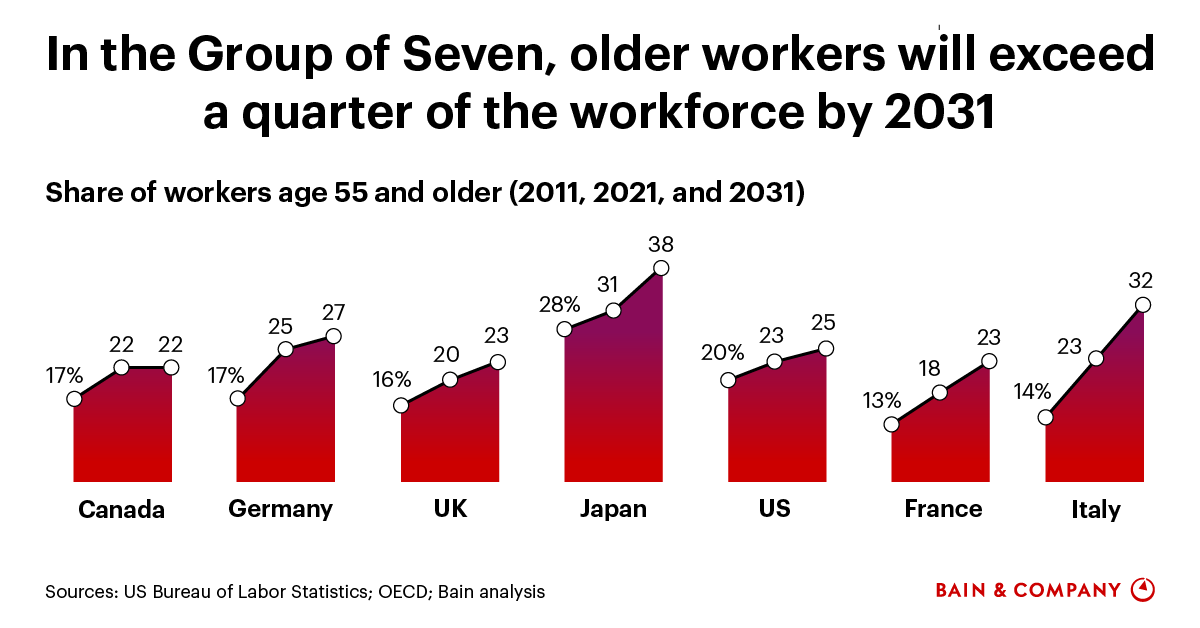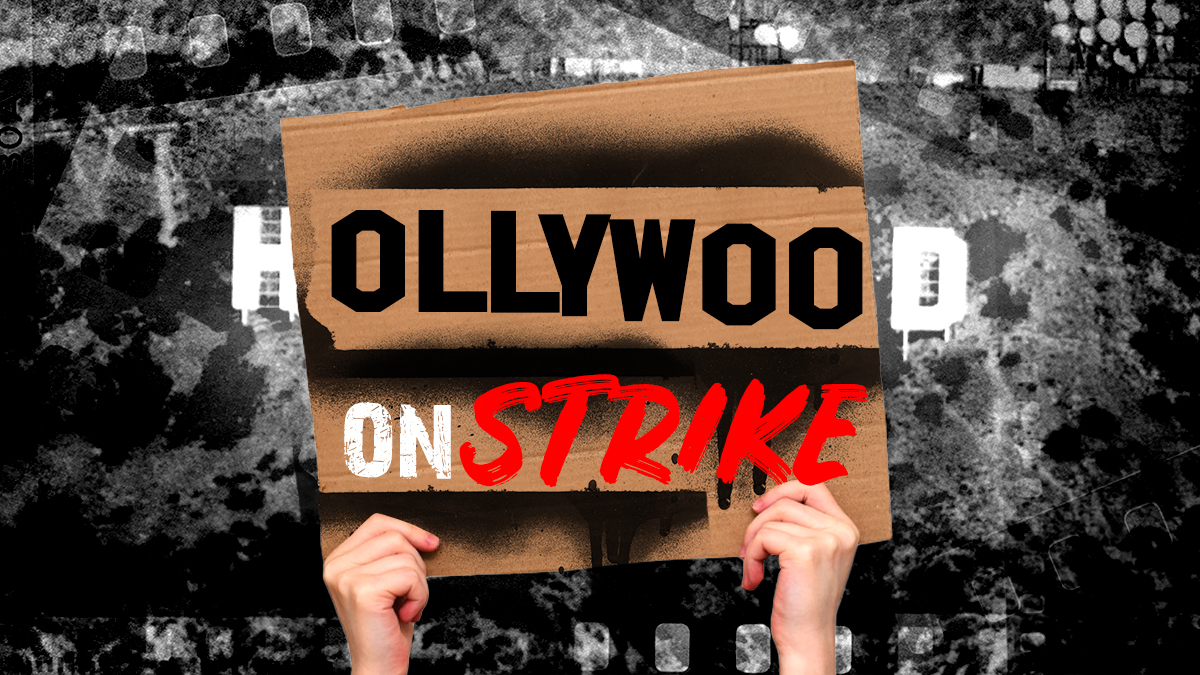- The Recruiting Life
- Posts
- Do DEI Initiatives Lead to Reverse Discrimination?
Do DEI Initiatives Lead to Reverse Discrimination?
Despite the best intentions DEI related lawsuits keep happening.

This week’s newsletter is brought to you by RecruiterPM:
In this issue:
Chart: Americans on Racial Equality
Do DEI Initiatives Lead to Reverse Discrimination?
The Pros and Cons of Raising the Minimum Wage
Who is responsible for the mental health of workers?
Comics: A Day in the Life of a Recruiter
In Case You Missed It

Chart: Americans on Racial Equality


Do DEI Initiatives Lead to Reverse Discrimination?

Back in 2020, Gannett announced that they were making changes to their employee demographics to better reflect their readership. Here is what they said back then…
And yet, across the nation, newsrooms continue to struggle with a lack of diversity –– especially in leadership ranks, including some of our own. We must do better.
Diversity and inclusion are choices, not just words.
Today, USA TODAY and our local newsrooms are publishing a census that documents the number of our journalists who are female, Black, Indigenous and people of color, putting our staffs in context of our communities' demographics.
We are committing to achieving gender, racial and ethnic parity by 2025 and will report our progress annually.
Flash forward to today, and a lawsuit has been filed in the U.S. District Court for the Eastern District of Virginia by current, former, and potential employees of Gannett. The lawsuit claims that the company's "Reverse Race Discrimination Policy," which was introduced in 2020 with the aim of achieving demographic diversity in its newsrooms matching the communities they report on by 2025, unfairly discriminated against individuals categorized as "non-minorities" based on their race. The complaint alleges that Gannett implemented this policy without proper regard for civil rights laws or the well-being of the employees and potential workers whose lives would be affected.
According to the complaint, the leadership of Gannett was motivated to adhere to this new policy through the offer of bonuses, recognition, and career advancements. Ironically, the desire for a more diverse workplace did not seem to be motivation enough. SMH.
This had me wondering if there was a cause-and-effect dynamic going on. If companies launch a DEI initiative, would it ultimately lead to reverse discrimination cases? How could I even begin to track that? My first thought was the EEOC (Equal Employment Opportunity Commission) so I began poking around there and struck paydirt rather quickly. (Yay.) In March 2023, the EEOC published its Annual Performance Report that provided an overview of charges filed, and the EEOC's enforcement measures from fiscal year 2022, among other things. These are my cliff notes.
Initially, there was a 20% surge in discrimination complaints compared to the preceding year. The report said that should not be surprising as historically, there tends to be a rise in grievances during periods of financial strain and workforce reductions. It also argued that the uptick in complaints could also be attributed to heightened interactions among employees upon their return to the office. The substantial upswing should serve as a signal to employers, indicating a heightened perception of discriminatory incidents taking place within the workplace. (Yikes)
Secondly, the Equal Employment Opportunity Commission (EEOC) initiated 91 merit-based lawsuits, accusing employees of involvement in illegal discriminatory activities. Among these, 13 lawsuits alleged systemic discrimination that affected multiple individuals. This number is projected to continue its upward trajectory.
Another noteworthy observation is that the commissioners themselves instigated 29 investigations—referred to as commissioner charges—an infrequently utilized approach. To put this in context, only six commissioner charges were authorized in each of the prior two fiscal years. These charges are regarded as "targeted" investigations, distinct from those spurred by individual complaints.

Although the report is extensive, it is evident that there exists, at the very least, a perception of heightened workplace discrimination. The commissioners, who are currently quite active, are instigating focused investigations into areas prioritized by the administration. As the Biden administration has stated on several occasions that the biggest threat to America is white supremacy, I doubt “reverse discrimination” cases will be a high priority. Despite that, a few reverse discrimination cases have made headlines in 2022. At the heart of the cases is how DEI programs (or moves to comply with the spirit of such programs) sometimes conflict with federal or state EEO (equal employment opportunity) laws. For example…
Duvall v. Novant Health Inc., North Carolina (2022) - David Duvall was a healthcare executive at Novant Health Inc. When he lost his job, he claimed that he had been treated unfairly because of his race and gender. Similar to other companies, Novant introduced various programs aimed at promoting diversity, equity, and inclusion (DEI), which included a target to increase the number of women in top leadership roles within specified timeframes. Duvall provided proof, such as company statements expressing a desire to adjust the workforce to mirror the demographics of the local community. He also presented statistical evidence showing how the composition of the company's employees was changing over time. Duvall additionally highlighted a recurring trend where white men were being let go and replaced by women. After careful consideration, the jury concluded that both Duvall's race and gender played a role in his termination. As a result, they awarded him damages exceeding $10 million to compensate for the harm he suffered.
Lutz v. Liquidity Services, Inc., Maryland (2022) - A lawyer who worked within Electrolux NA Inc. and was part of their legal team has claimed that he was denied a promotion from being an interim general counsel to a permanent role due to being a man. He asserts that the company, along with its parent company in Sweden, was actively pushing for greater gender diversity in leadership positions, favoring women for these roles. This claim was made through a federal lawsuit. According to the lawsuit, Sal Kafiti alleged that Electrolux AB, the parent company, openly demonstrated a discriminatory inclination toward female candidates for leadership and managerial positions. They did so by establishing specific goals and quotas with the aim of significantly increasing the proportion of women in such roles by the conclusion of 2020.
Runkel v. City of Springfield (2022) - Diane Runkel, a white assistant purchasing manager, was bypassed for a promotion by the Mayor. Instead, a Black man was initially offered the role, and when he declined, a Black subordinate of Runkel's was promoted. The Mayor's justification of aligning with the city's demographics raised concerns. (In a media interview, the Mayor -- who was up for reelection -- cited the promotion of the Black employee "as an example of how his administration was moving toward reflecting the city's demographics.") Runkel's case gained strength due to evidence showing the subordinate submitted her resume only after the offer. The Mayor's admission of not considering Runkel further undermined the City's claims of her inferiority. This accumulating evidence suggested that the Mayor's selection might have been influenced by racial motives. Legal proceedings followed suit.

If you are a company running a DEI program or seeking to set hiring quotas based on race or gender, the lawsuits I pointed out should give you a reason to be concerned. What if your well-intentioned push for inclusion today opens you up to a lawsuit tomorrow? How can you be sure that your company is not already in jeopardy?
Well, I am not an employment lawyer. However, I can read what employment lawyers have posted online. Consider this quote from Penchman Law Group.
The Supreme Court and the Equal Employment Opportunity Commission have approved voluntary affirmative action efforts by private employers under limited circumstances. However, in order to comply with federal anti-discrimination laws, an employer’s voluntary affirmative action policy must meet all three requirements established in two Supreme Court cases: United Steelworkers of America, AFL-CIO-CLC v. Weber (1979) and Johnson v. Transportation Agency (1987). Specifically, the affirmative action: (1) must seek to remedy “conspicuous racial [or gender] imbalances in traditionally segregated job categories;” (2) cannot “unnecessarily trammel the interests of white [or male] employees [or applicants]” by, for example, barring whites or males from employment; establishing quotas or inflexible goals; or requiring the discharge or layoff of white or male employees; and (3) must be a temporary measure designed to correct a manifest imbalance, rather than to maintain a particular racial or gender balance.
Something else Penchman Law Group said caught my eye as well. I’ll just leave that here.
Companies also run the risk that diversity training may itself be used as evidence of reverse discrimination. A set of slides at a Coca-Cola diversity training read: “Try to be less white” and “To be less white is to be less oppressive, less arrogant, less certain.” Similarly, the city of Seattle’s Office of Civil Rights sent an e-mail inviting “white city employees” to attend a training session on “Interrupting Internalized Racial Superiority and Whiteness,” a program designed to help white workers examine their “complicity in . . . white supremacy” and “interrupt racism in ways that are accountable to black, indigenous and people of color.” Progressive intentions aside, this type of labeling could be viewed as racially antagonistic and potentially support claims by white employees or applicants alleging a discriminatory preference in favor of persons of color.
The relationship between Diversity, Equity, and Inclusion (DEI) programs and reverse discrimination cases can be complex and context-dependent. DEI programs are generally designed to promote equal opportunities for underrepresented groups, correct historical imbalances, and foster a more inclusive workplace. However, in some cases, the implementation of DEI initiatives can lead to perceptions of reverse discrimination, where individuals from majority or non-targeted groups feel unfairly treated due to their race, gender, or other characteristics. The EEOC expects reverse discrimination cases to continue due to economic conditions and increased presence in the workplace. I have a different view. I think the reverse discrimination lawsuits will continue as companies continue demonizing one group for the alleged betterment of other groups. As the saying goes, the road to Hell is paved with good intentions.

Sponsored post:
RecruiterPM: A Recruiting Game-Changer
Hey Recruiting mavens!
Ditch the old-school ATS. With RecruiterPM, AI sourcing feels like magic, and scheduling? A breeze. Imagine an ATS that truly gets project management & team collaboration.
CRM chaos? Not here. Dive into seamless integrations and Email/SMS campaigns that hit just right.
Elevate your recruitment game and let the numbers speak with dashboards that actually make sense; Leadership boards, gamification and easy to track metrics to keep the team engaged and productive.
Interested in a Demo? Click here

The Pros and Cons of Raising the Minimum Wage

Last week was the anniversary of the “March on Washington,” also known as “The Great March on Washington,” also known as “The March on Washington for Jobs and Freedom.” At the march, final speaker Dr. Martin Luther King Jr., standing in front of the Lincoln Memorial, delivered his historic "I Have a Dream" speech in which he called for an end to racism. The best-known part of his speech, and my favorite part, is when he said, "I have a dream that my four little children will one day live in a nation where they will not be judged by the color of their skin but by the content of their character." That moment was iconic and in retrospect, overshadowed the overall goals of the march which included calls for congressional passage of the Civil Rights Act, full integration of public schools, and enactment of a bill prohibiting job discrimination. It’s the “job discrimination” part that’s been forgotten by the public, I think.
Click here to see an historical list of the demands being expressed by the speakers and the marchers assembled. Number eight on the list is “a national minimum wage act that will give all Americans a decent standard of living. (Government surveys show that anything less than $2.00 an hour fails to do this.)” In 1963, the minimum wage was $1.15 which is $11.23 today when you adjust for inflation. And $2.00 back then is about $20 today. That being said, the current federal minimum wage is $7.25 which translates into $0.74 in 1963 dollars, a step backwards for sure. Due to that regression, some groups have been fighting for a higher minimum wage.

Fightfor15.org
The Fight for $15 movement, which began in 2012, advocates for a $15 per hour minimum wage and a union for workers. The movement has involved strikes and protests by workers in various industries, including fast food, home healthcare, and convenience stores. The movement has been successful in getting some states and cities to raise their minimum wage. In support of that ideal, the Rockefeller Foundation argues on their blog that increasing the minimum wage could help close the racial wealth gap and highlighted how people of color are disproportionately represented among low-wage workers. And in March 2023, Politico reported that liberal lawmakers and progressive activists were aiming for a minimum wage of $20 per hour or more. The article noted that some states had already raised their minimum wage, and that there was a growing push for higher wages in response to inflation and economic growth.
When you consider the popular arguments for increasing the minimum wage, they pretty much fit into these buckets:
Helps low-wage workers move out of poverty and keep up with inflation.
Increases consumer spending, which can boost economic growth.
Reduces government assistance and increases tax revenue.
Improves employee retention and morale.
Can reduce income inequality.
All of these reasons sound compelling however, there is a contrarian view that says raising the minimum wage does more harm than good. In fact, it was an issue of debate during the California recall of Governor Gavin Newsome in 2021. Radio talk show personality, Larry Elder, discussed his position that minimum wage should be $0.00 with California opinion editors. Among his reasons was the assertion that minimum wage were burdensome and reduced the number of jobs. He made more arguments in this video.
There is also the long-term advantages to big business. Patrick Bet-David of Valuetainment echoed Larry Elder’s sentiment and delved further into how and why big businesses want higher minimum wages. In a nutshell, raising minimum wage will cause hardship on smaller businesses that cannot afford to pay. As a result, smaller businesses will either go under because they cannot afford the cost of doing business or they will get acquired by the larger enterprises.
Famed economist Thomas Sowell is also an opponent of minimum wage laws. In a NY Post article entitled, “Why racists love the minimum wage laws” he gives a historical perspective on how the minimum wage laws harm minorities. (Admittedly, this is an angle I had not considered before.)
Minimum-wage laws can even affect the level of racial discrimination. In an earlier era, when racial discrimination was both legally and socially accepted, minimum-wage laws were often used openly to price minorities out of the job market.
In 1925, a minimum-wage law was passed in the Canadian province of British Columbia, with the intent and effect of pricing Japanese immigrants out of jobs in the lumbering industry.
A Harvard professor of that era referred approvingly to Australia’s minimum wage law as a means to “protect the white Australian’s standard of living from the invidious competition of the colored races, particularly of the Chinese” who were willing to work for less.
In South Africa during the era of apartheid, white labor unions urged that a minimum-wage law be applied to all races, to keep black workers from taking jobs away from white unionized workers by working for less than the union pay scale.
Some supporters of the first federal minimum-wage law in the United States — the Davis-Bacon Act of 1931 — used exactly the same rationale, citing the fact that Southern construction companies, using non-union black workers, were able to come north and underbid construction companies using unionized white labor.
These supporters of minimum-wage laws understood long ago something that today’s supporters of such laws seem not to have bothered to think through. People whose wages are raised by law do not necessarily benefit, because they are often less likely to be hired at the imposed minimum-wage rate.
Labor unions have been supporters of minimum-wage laws in countries around the world, since these laws price nonunion workers out of jobs, leaving more jobs for union members.
People who are content to advocate policies that sound good, whether for political reasons or just to feel good about themselves, often do not bother to think through the consequences beforehand or to check the results afterwards.
If you are curious about the racist roots of the minimum wage, check out this article, this article, and this article. If you’re like me, your jaw will drop to the ground as well. But I digress. The arguments for and against increasing the minimum wage may be moot in this age of automation. Let me count the ways.
Job Displacement: Automation can lead to the displacement of certain low-skilled jobs that are more easily automated. This could potentially impact jobs that are typically paid at or near the minimum wage. As companies adopt automated systems and technologies to perform tasks, there might be fewer positions available for human workers, especially in routine and repetitive tasks.
Increased Demand for Skilled Workers: Automation often creates a demand for workers who can operate, maintain, and troubleshoot automated systems. As a result, there could be an increased demand for workers with higher skills and technical expertise. This might lead to a disparity in wages between skilled and unskilled workers, potentially affecting the structure of minimum wage jobs.
Pressure on Employers to Automate: With rising labor costs due to increasing minimum wages, some employers might find it more cost-effective to invest in automation technologies. This could result in a shift towards automation in industries that rely heavily on minimum wage labor.
Potential Wage Compression: Automation can lead to a reduction in the number of entry-level jobs available, which might create more competition among workers for these positions. This competition could potentially put downward pressure on wages, including those at or slightly above the minimum wage.
Policy Considerations: As automation continues to advance, policymakers may need to consider how to balance the benefits of technological progress with potential disruptions to the labor market. This could involve exploring ways to provide additional training and reskilling opportunities for workers affected by automation, as well as considering how minimum wage policies might need to adapt to changing workforce dynamics.
In the ever-evolving landscape of economic and social progress, the debates surrounding the minimum wage persist as a critical touchstone. (Boy, does it ever.) As we reflect on historic milestones like the March on Washington and the aspirations of Dr. Martin Luther King Jr., we find ourselves at a crossroads of ideology and reality. While the arguments both for and against raising the minimum wage present compelling narratives, the advent of automation introduces a new dimension to the discourse. The potential repercussions of technological advancement, from job displacement to skill demands, remind us that the path forward requires careful consideration. Will we figure things out in a way that makes future minimum wage debates moot? I doubt it but a man can dream.



The Jim Stroud Podcast
Who is responsible for the mental health of workers?
Today I had the distinct pleasure of interviewing Genevieve Hawkins, author of “Mentally at Work.” We discussed her motivations for writing this book, workplace strategies for encouraging good mental health in the workplace, the future of mental health in the workplace and just how much should a company focus on the mental health of their workers. After all they are there to work and not receive therapy, well, that answer may surprise you.
Special Report
Download “Racism Reimagined: How Wokeism is Destroying the Workplace.” It is freely available for download here. What's in it? Well... In a nutshell, I explain wokeism and how I think it impacts society. Afterwards, I take things a step further and discuss how the movement infiltrated the workplace through diversity training. I dive into reasons why I am not a fan of modern-day diversity training then, I go into a mini-rant on why diversity training should not be banned. To support my assertion, I give several suggestions on how it could be improved.

A Day in the Life of a Recruiter



One last thing...
I generate demand and brand awareness for HR Tech companies with awesome content. May I be of assistance? Connect with me on LinkedIn and let's talk about it.
Jim Stroud













